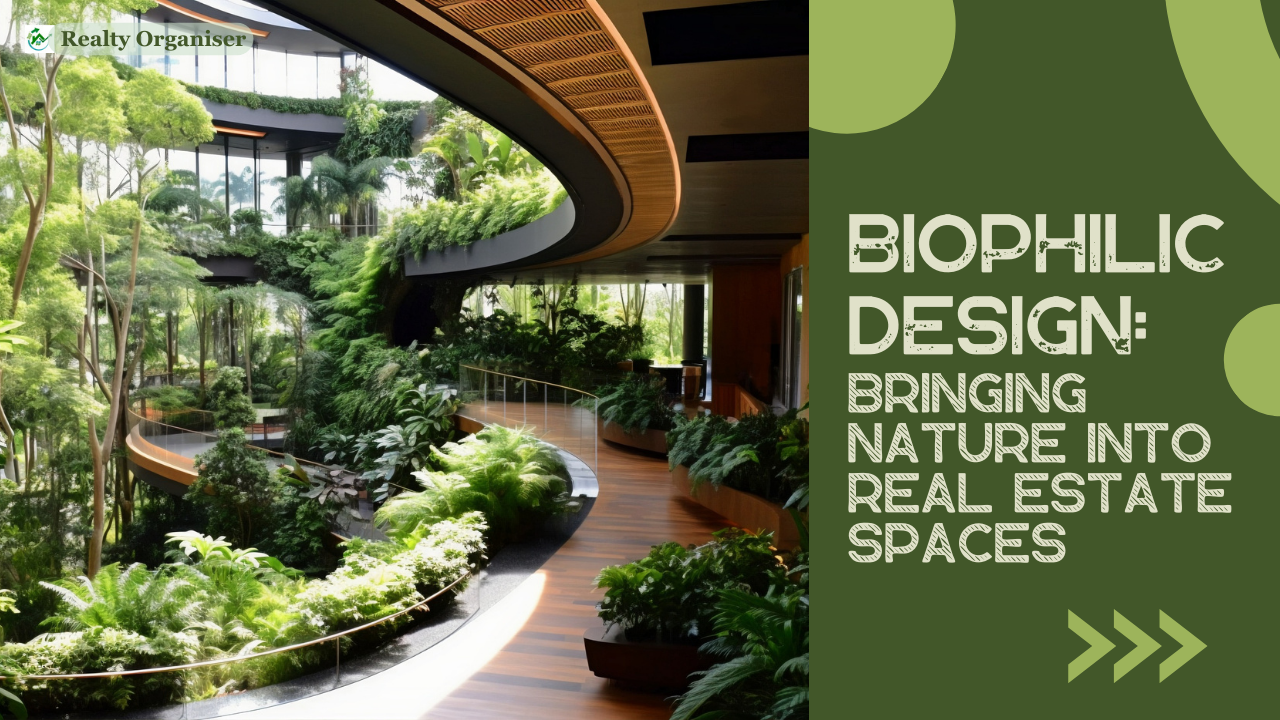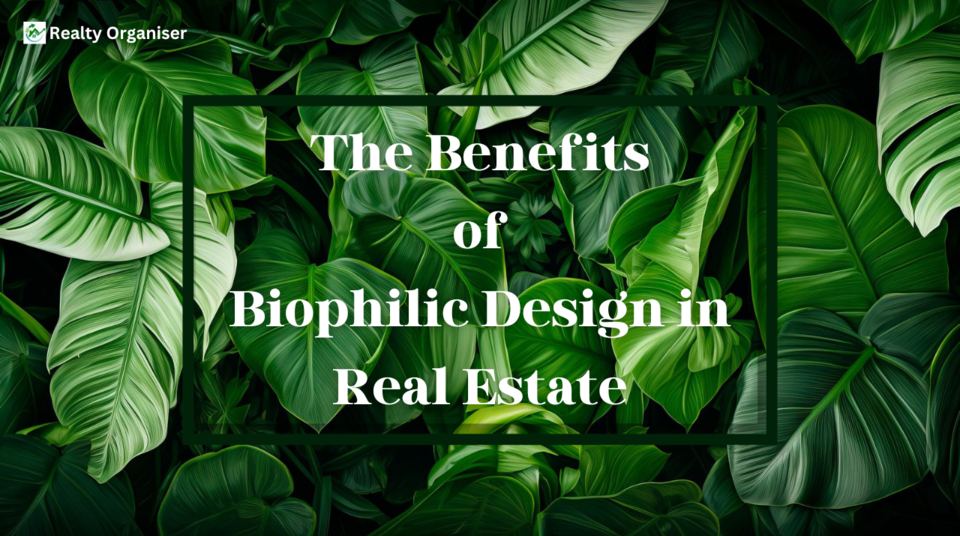
Biophilic Design: Bringing Nature into Real Estate Spaces
In today's fast-paced urban environments, people are increasingly disconnected from nature. However, a growing movement in architecture and interior design seeks to counteract this trend through the concept of biophilic design. This innovative approach aims to incorporate elements of nature into built environments, such as homes, offices, and public spaces, to enhance well-being and foster a deeper connection with the natural world.
Introduction to Biophilic Design
What is biophilic design?
Biophilic design is rooted in the idea that humans have an innate affinity for nature and natural processes. By integrating elements such as natural light, vegetation, and organic materials into architectural spaces, biophilic design seeks to create environments that support human health, productivity, and overall happiness.
Importance of biophilic design in real estate.
In the field of real estate, biophilic design has gained traction as developers and designers recognize its potential to attract tenants, increase property values, and differentiate their projects in a competitive market. Beyond aesthetic appeal, biophilic design offers tangible benefits for occupants, building owners, and the environment.
The Benefits of Biophilic Design in Real Estate

• Psychological benefits for occupants.
Studies have shown that exposure to nature, even in simulated forms, can have a positive impact on mental health and cognitive function. Incorporating biophilic elements into real estate spaces can reduce stress, increase concentration, and enhance creativity, leading to happier and more productive occupants.
• Improved air quality and health outcomes.
Indoor air quality is a significant concern in densely populated urban areas, where pollutants can accumulate and impact respiratory health. Biophilic design strategies, such as incorporating indoor plants and natural ventilation systems, can help improve air quality, reduce the prevalence of indoor pollutants, and promote overall well-being.
Elements of Biophilic Design
• Natural light and views.
One of the fundamental principles of biophilic design is maximizing access to natural light and views of the outdoors. Large windows, skylights, and strategically placed openings can flood interior spaces with sunlight, creating a connection to the rhythms of the natural world and reducing reliance on artificial lighting.
• Indoor plants and greenery.
Bringing plants indoors is a simple yet effective way to introduce biophilic elements into real estate spaces. Not only do plants improve air quality by filtering out toxins, but they also add visual interest, texture, and a sense of vitality to indoor environments.
• Natural materials and textures.
Incorporating natural materials such as wood, stone, and water features can evoke the sensory experience of being outdoors. From hardwood floors to exposed brick walls, these materials add warmth, texture, and character to interior spaces, enhancing the overall aesthetic appeal of the property.
Case Studies of Biophilic Design in Real Estate
• Residential spaces.
In residential settings, biophilic design principles can be applied to create tranquil retreats that promote relaxation and well-being. From rooftop gardens to indoor atriums, there are countless opportunities to incorporate nature-inspired elements into single-family homes, apartment complexes, and condominiums.
• Commercial buildings.
In the realm of commercial real estate, biophilic design has been embraced by forward-thinking companies seeking to enhance employee satisfaction, retention, and productivity. Office spaces that feature biophilic elements such as living walls, green roofs, and natural materials can foster a healthier and more collaborative work environment.
• Public spaces.
Biophilic design is also making its mark on public spaces, from parks and plazas to shopping malls and transportation hubs. By integrating natural elements such as water features, native plants, and outdoor seating areas, urban planners and landscape architects can create vibrant, welcoming environments that encourage social interaction and community engagement.
Challenges and Considerations
• Maintenance requirements.
While biophilic design offers numerous benefits, it also comes with its own set of challenges, particularly in terms of maintenance. Living plants require ongoing care and attention to thrive indoors, and water features must be properly maintained to prevent leaks and water damage.
• Integration with existing structures.
In retrofitting existing buildings with biophilic elements, designers and architects must carefully consider how to integrate these features without compromising structural integrity or functionality. From retrofitting green roofs to installing vertical gardens, creative solutions are needed to seamlessly blend nature with the built environment.
Cost Considerations
• Initial investment vs. long-term benefits.
One of the primary concerns for developers and property owners considering biophilic design is the upfront cost. While incorporating biophilic elements may require a higher initial investment compared to conventional design approaches, the long-term benefits, such as energy savings, improved occupant health, and increased property values, can outweigh these costs over time.
Future Trends in Biophilic Design
• Technological advancements.
As technology continues to evolve, we can expect to see innovative new materials and systems that further integrate nature into the built environment. From smart green walls that monitor plant health to automated shading systems that optimize natural light, these advancements hold the potential to revolutionize biophilic design practices.
• Cultural shifts.
As society becomes increasingly aware of the importance of sustainability and environmental stewardship, we can anticipate a greater emphasis on biophilic design principles in future real estate projects. From eco-friendly materials to carbon-neutral building practices, there is a growing demand for spaces that not only benefit occupants but also minimize their ecological footprint.
Conclusion
Biophilic design represents a holistic approach to creating built environments that prioritize human well-being, environmental sustainability, and aesthetic beauty. By integrating elements of nature into real estate spaces, developers and designers can create healthier, more harmonious environments that enrich the lives of occupants and contribute to a more sustainable future.
